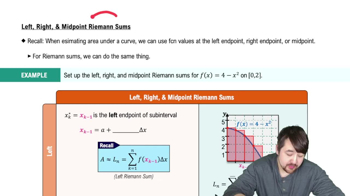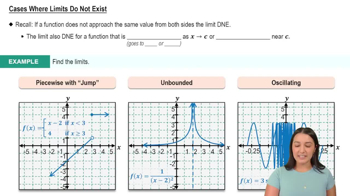Use the formal definitions from Exercise 97 to prove the limit statements in Exercises 98–102.
lim x→2⁻ (1 / (x − 2)) = −∞
 Verified step by step guidance
Verified step by step guidance Verified video answer for a similar problem:
Verified video answer for a similar problem:



 6:47m
6:47mMaster Finding Limits Numerically and Graphically with a bite sized video explanation from Patrick
Start learning